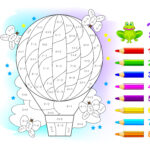Radiant Reminiscence: Visual Storytelling to Celebrate Life’s Chapters
Visual storytelling is a powerful way to narrate stories using images and videos. It has been a part of human communication since ancient times, from rock carvings to modern digital media. This form of storytelling is not just about conveying information; it’s about creating an emotional connection with the audience. In this article, we’ll explore how visual storytelling can be used to celebrate life’s chapters, making memories more vivid and engaging.
### The Power of Visual Storytelling
Visual storytelling is immediate, comprehensible, and effective. The human brain processes visual information much faster than text, which makes it a compelling tool for communication. When we combine text with images, our ability to remember information increases significantly. This is why visual storytelling is crucial in various sectors, including design, fashion, and travel.
### Celebrating Life’s Chapters
Life is made up of numerous chapters, each filled with unique experiences and memories. Visual storytelling can help us relive these moments by creating narratives that evoke emotions and inspire reflection. Whether it’s a family photo album or a video montage of special events, visual storytelling helps us connect with our past and appreciate the journey we’ve taken.
### Creating a Visual Story
To create a visual story that celebrates life’s chapters, you need to follow a few key steps:
1. **Define Your Objective**: Determine what you want to achieve with your story. Is it to share a personal journey, highlight a milestone, or simply to reminisce?
2. **Know Your Audience**: Understand who your story is for. This will help you tailor the narrative to resonate with them emotionally.
3. **Develop Your Concept**: Identify the core of your story. What message do you want to convey? What emotions do you want to evoke?
4. **Plan Your Narrative**: Decide on the sequence of events. Will your story be linear or non-linear? Create a storyboard to visualize the flow.
5. **Select Visual Elements**: Choose the images, videos, or graphics that will bring your story to life. Ensure they are relevant and engaging.
6. **Add Text Elements**: Write the text that will accompany your visuals. This could be captions, voiceovers, or even dialogue.
7. **Distribute Your Story**: Decide how you will share your story. Will it be on social media, a website, or in a physical format like a book?
### Tools for Visual Storytelling
There are many tools available to help you create engaging visual stories. For editing images and videos, software like Adobe Photoshop and Premiere Pro are popular choices. For creating storyboards and planning your narrative, tools like Figma and Miro can be very useful.
### Conclusion
Visual storytelling is a powerful medium for celebrating life’s chapters. By using images and videos to narrate our experiences, we can create lasting memories and inspire others to reflect on their own journeys. Whether you’re sharing a personal story or creating a brand narrative, visual storytelling has the potential to captivate and engage your audience in a way that text alone cannot.



